
Pelurga comitata, the dark spinach, is a moth of the family Geometridae. It is found throughout the Palearctic, including Europe, Siberia, the Russian Far East and northern China
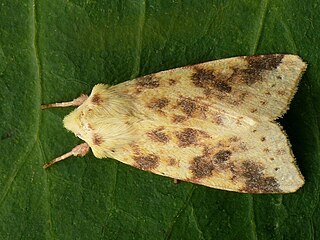
Xanthia icteritia, the sallow, is a moth of the family Noctuidae. It is found in the Palearctic ecozone.
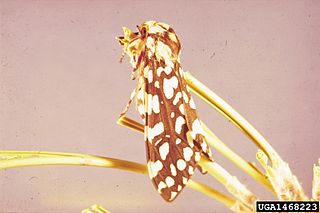
Lophocampa ingens is a moth of the family Erebidae. It was described by Henry Edwards in 1881. It is found in the southern Rocky Mountains and in Mexico.

Lophocampa montana is a moth of the family Erebidae. It was described by William Schaus in 1911. It is known from volcan Poás in Costa Rica.
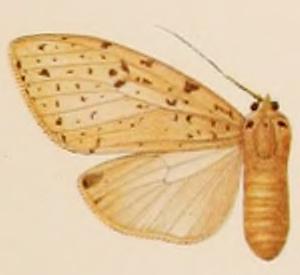
Lophocampa albescens is a moth of the family Erebidae. It was described by Walter Rothschild in 1909. It is found in French Guiana, Suriname and Venezuela.

Lophocampa atriceps is a moth in the family Erebidae. It was described by George Hampson in 1901. It is found in Colombia, Ecuador (Guayas) and Costa Rica.

Lophocampa amaxiaeformis is a moth of the family Erebidae. It was described by Walter Rothschild in 1910. It is found in Panama and Ecuador.

Lophocampa atrimaculata is a moth of the family Erebidae. It was described by George Hampson in 1901. It is found in Costa Rica, Brazil, Bolivia and Peru.
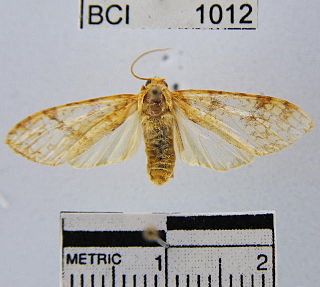
Lophocampa catenulata is a moth of the family Erebidae. It was described by Jacob Hübner in 1812. It is found on Cuba and in Mexico, Costa Rica, Guatemala, Panama, Venezuela, Suriname, French Guiana, Brazil, Peru and Argentina.

Lophocampa citrina is a moth of the family Erebidae. It was described by Jan Sepp in 1843. It is found in Mexico, Honduras, Panama, French Guiana, Brazil, Venezuela and the Amazon region.
Lophocampa dinora is a moth of the family Erebidae. It was described by William Schaus in 1924. It is found in Argentina and Bolivia.

Lophocampa dognini, the Rothschild's marbled tiger, is a moth of the family Erebidae. It was described by Walter Rothschild in 1910. It is found in Peru.

Lophocampa endolobata is a moth of the family Erebidae. It was described by George Hampson in 1901. It is found in Brazil.
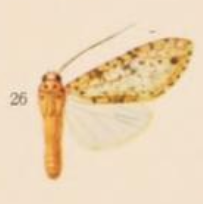
Lophocampa endrolepia is a moth of the family Erebidae. It was described by Paul Dognin in 1908. It is found in Ecuador.

Lophocampa grotei is a moth of the family Erebidae. It was described by William Schaus in 1904. It is found on Cuba.
Lophocampa indistincta is a moth of the family Erebidae. It was described by William Barnes and James Halliday McDunnough in 1910. It is found in California, where it is only found on the Channel Islands.
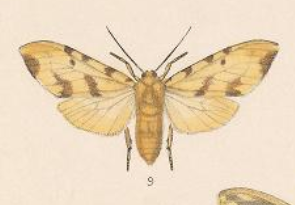
Lophocampa labaca is a moth of the family Erebidae. It was described by Herbert Druce in 1890. It is found in Jalisco, Mexico.
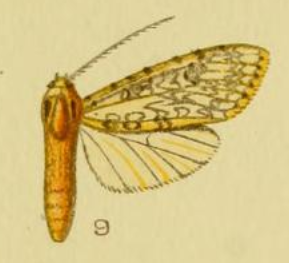
Lophocampa longipennis is a moth of the family Erebidae. It was described by Paul Dognin in 1908. It is found in Bolivia.

Lophocampa luxa is a moth of the subfamily Arctiinae. It was described by Augustus Radcliffe Grote in 1866. It is found on Cuba.
Lophocampa niveigutta is a moth of the family Erebidae. It was described by Francis Walker in 1856. It is found in Brazil and Colombia.
The Global Lepidoptera Names Index (LepIndex) is a searchable database maintained by the Department of Entomology at the Natural History Museum, London.

The Natural History Museum in London is a natural history museum that exhibits a vast range of specimens from various segments of natural history. It is one of three major museums on Exhibition Road in South Kensington, the others being the Science Museum and the Victoria and Albert Museum. The Natural History Museum's main frontage, however, is on Cromwell Road.



















